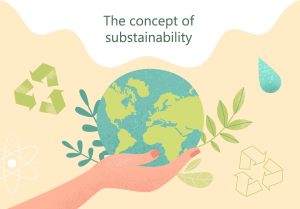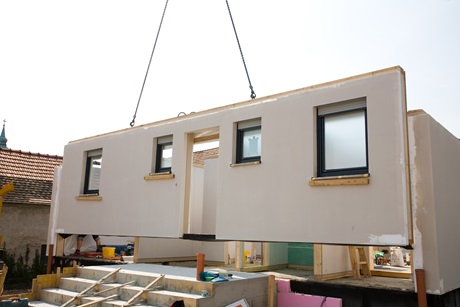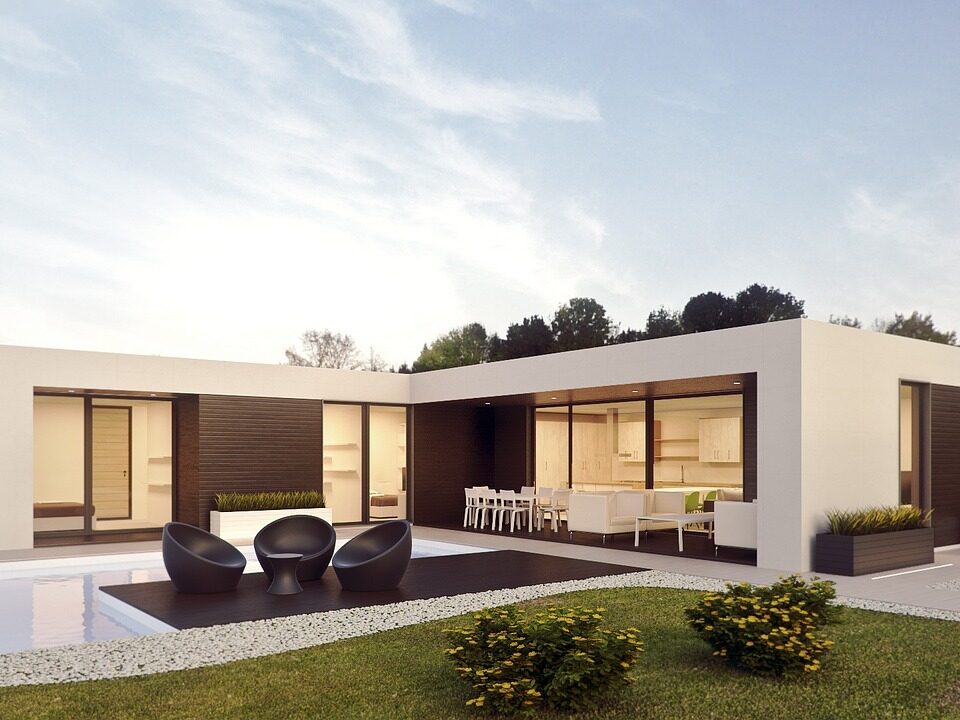Benefits of Sustainable Construction

Modular vs. Prefab: Differences & Benefits
May 24, 2022
4 Ways Modular Homes are Eco-Friendly
June 28, 2022
Construction has been a primary source of blame for the current environmental problems. From the consumption of global resources both in terms of construction and building operation to the pollution of the surrounding environment, additional research on green building design and the use of green building materials to minimize environmental impact is already a practice only a few companies are finding their niche in. Relying on the design of a project to achieve the goal of sustainability, or minimizing impacts through appropriate management on site, however, are not enough to tackle the current and ongoing problem. The early design stage of a project is important to consider when aiming for sustainability prior to committing with a development. The appraisal stage is crucial when selecting environmentally friendly designs.
Sustainable development generally concerns attitudes and judgment to help insure long-term ecological, social, and economic growth in society. When applied to project development, it involves the efficient allocation of resources, minimum energy consumption, low embodied energy intensity in building materials, reuse and recycling, and other mechanisms to achieve effective and efficient short – and long-term use of natural resources.

At Modly, we make it our mission to contribute to the wellness of the earth’s future. Healing the earth will take years of hard work and dedication to using only the most valuable, high-quality and sustainable materials and equipment in our company, paving the roadmap for more companies to contribute in a major way to the earth’s healing. Sustainable development minimizes the ecological and economical impact in major ways. Here are the main focus areas in which sustainable development finds advantages.
1. Lower Climate Impact
The world’s greatest challenge is climate change caused by human activity. By reducing our dependence on fossil fuels, and adopting clean energy, we can lessen the concentration and flow of heat-trapping greenhouse gasses. This will lessen the depletion of the ozone layer.
If we can do something to reduce pollution, it will bring positive results like better air quality, the preservation of biodiversity, more green areas, and the survival of more species. Also, the extreme weather patterns with heat waves that we see so frequently nowadays, will be controlled to some extent.
2. Ocean development
The ocean drives global systems that make our planet habitable for mankind. Our drinking water, weather, food, and even the oxygen that we breathe are all controlled by the ocean. Global warming coupled with human activities is damaging our oceans-making them more acidic and warm, thus affecting marine life. India, with its long coastline of 7500 Km, has a lot to gain from a sustainable ocean economy. With sustainable development, we can save and sustain our fisheries, providing food and livelihood to millions of disadvantaged people. The diversity of new lives in the seas are a great source of research in pharmaceuticals.
3. Economies
We have to create a level playing field so that all sections of society can prosper. Sustainable development helps us to reduce wastes and cut costs. For example, sustainable agriculture will help us to reduce the wastage in farm produce, which can be as high as 40 percent.
Sustainable economies discourage centralized manufacturing and suggest local production due to the latter’s environmental benefits. These are reduced pollution, emission, and waste. Localized small-scale production boosts the local economy and creates jobs. So, the entire society benefits.
4. Eco-Cities
As the adverse environmental effect on our polluted megacities rises and population pressures are felt everywhere, some communities are rising to face these challenges. Urban neighborhoods or eco-districts that use sustainable development to create prosperous communities with low negative impacts are coming up in many places. Here, real estate firms work with city planners to construct buildings in such a manner that it serves the core needs of the community.
These include access to amenities and businesses, affordable housing, health and wellness, quality schools, etc., with minimum environmental impact. New real estates are built to follow strict environmental laws that include air, soil, and water quality. These developments of the future will have lots of demand because people want sustainable options to live, play, and work.
5. Sustainable Infrastructure
The concept of sustainable infrastructure refers to systems and equipment that are designed to meet the people’s essential service needs. These included bridges, hydroelectric power stations, roads, etc. Through sustainable infrastructure, we can plan and build public operations and systems that don’t threaten ecological processes.
One such example of sustainable infrastructure is the modern transit systems. They carry more commuters on a lesser number of vehicles, with cheap fares, decreased congestion, and reduced fuel consumption.
Sustainable infrastructure can also protect our mega-cities from climate change.
6. Nuclear Technology
The benefits of nuclear science can solve some of our most complex challenges like stagnant economies, environmental harm, hunger, etc. The international development sector is using sustainable nuclear technology in areas like agriculture, ecology, energy, food preservation, hydrology, and medicine.
Some advantages of nuclear technology:
-
- The number of people surviving without electricity worldwide is more than 1 billion. Nuclear technology can help bring reliable electricity infrastructure to help improve the quality of life for people living below the poverty line.
- The adoption of nuclear electricity prevents carbon dioxide that would have otherwise been emitted from coal-based thermal power plants from entering the atmosphere. Thus it protects our climate.
- Unlike other utilities whose supply is irregular, nuclear power is available 24/7. It is also reliable and stable.
7. Social Well Being
Sustainability helps us to practice voluntary simplicity which focuses on consuming less but enjoying life more.
-
- It helps to promote healthier and simple living, for instance, walking or cycling over traveling by cars.
- It promotes fresh local food over processed food.
- It favors the use of harmless natural products over synthetic ones.
Individuals and society are interlinked. If an individual benefits, then society also benefits, and vice-versa. Sustainable practices include giving and supporting each other and sharing common resources to achieve a higher level of social well-being.
8. Energy
Today our main conventional sources of energy are coal and oil. A time will come when we will run out of these resources. Renewable sources of energy are the Sun, wind, and water. And these will remain for eternity.
So, to preserve our future, we have to tap into these non-conventional sources of energy. Also, these will create more jobs in the process.
9. Business
Sustainability offers lots of benefits to businesses when it is integrated into operations. Some major advantages are:
-
- Reduce costs and increase productivity-Development of sustainable business practices leads to efficient operations that conserve resources and reduces costs. This includes simple energy conservation strategies like switching off unnecessary lights.
- Improved brand image-Consumer surveys have revealed that more than half of buyers consider a company’s effect on the environment while purchasing their products They are more likely to buy from businesses that practice sustainability.
- Helps to follow government rules-Central and state agencies are enacting regulations to protect the environment. Integrating sustainable practices in your business will help you to properly abide by them.
10. Construction Industry
Since the construction industry produces a large amount of waste, contractors and owners of these companies must reduce their impact by recycling wherever possible. This will lead to a healthy workplace and environment.
Experts have invented a type of concrete that is made up of fly ash, a by-product of burning coal. This reduces carbon emissions by absorbing carbon dioxide.
11. Agriculture
Did you know we have to feed a total of nine billion people by 2050? Sustainable agriculture focuses on innovative methods such as crop rotation and organic seeding techniques to promote high yields. This will help to provide food for a large population.
Sustainable agriculture must support the management of land, natural resources, and water, and nurture healthy ecosystems. Agriculture, comprising crop and livestock rearing, forestry, and fisheries, provides food, income, and jobs to the majority of poverty-stricken people.




